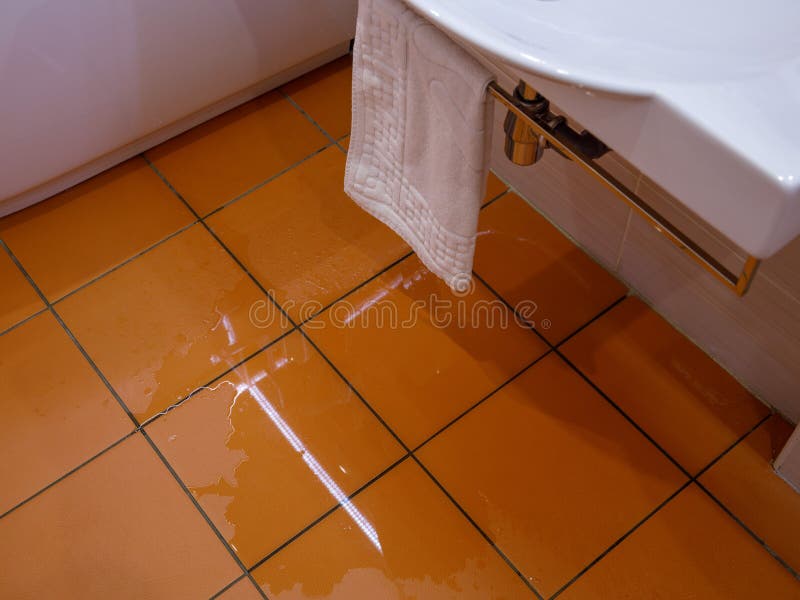Just how do you feel in regards to How to Repair and Prevent Bathroom Water Damage??

Water damage often occurs in the washroom because of the water made use of everyday. Sometimes, the damage could be a little mold from the shower. Other times, it's huge damages on your flooring. Whatever it is, it is constantly great to know the reason and avoid it prior to it occurs.
This overview will certainly experience several of the common reasons for water damage in the washroom. We will likewise analyze what you can do to stop these causes from harming your shower room. Allow's dive in.
These are the typical reasons you would have water damage in your shower rooms and how you can identify them:
Excess Dampness
It's awesome to have that long shower and splash water while you hem and haw and act like you're doing, however occasionally these acts could trigger water damage to your washroom.
Spraying water around can cause water to head to corners and form molds. See exactly how you spread out excess dampness around, and also when you do it, clean it up to prevent damages.
Splits in your wall surface ceramic tiles
Washroom wall ceramic tiles have actually been specially created for that purpose. They shield the wall surface from dampness from people taking showers. However, they are not unbreakable.
Often, your washroom wall tiles fracture as well as permit some dampness to leak into the wall. This can potentially ruin the wall if you don't take any type of action. If you discover a fracture on your wall tiles, fix it instantly. Don't wait up until it ruins your wall.
Overflowing bathrooms and also sinks
As humans, in some cases we make blunders that might trigger some water damage in the bathroom. As an example, leaving your sink faucet on can cause overruning as well as damages to various other parts of the restroom with wetness.
Also, a defective commode can cause overruning. For example, a damaged commode manage or other parts of the cistern. When this happens, it might damage the flooring.
As quickly as you notice an overflowing sink or toilet, call a plumbing technician to aid take care of it quickly.
Ruptured or Dripping Pipes
There are several pipes bring water to various parts of your bathroom. Some pipelines take water to the commode, the sink, the faucets, the shower, and also several other places. They crisscross the little location of the washroom.
From time to time, these pipes can get rusty and burst. Various other times, human action can cause them to leak. When this takes place, you'll locate water in the corners of your restroom or on the wall surface.
To find this, keep an eye out for bubbling walls, molds, or mold. Call a professional emergency situation plumbing professional to fix this when it takes place.
Roof Leakages
Often, the problem of water damage to the bathroom could not come from the shower room. For example, a roofing leakage might trigger damage to the bathroom ceiling. You can spot the damage done by looking at the water spots on the ceiling.
If you locate water discolorations on your ceiling, check the roofing system to see if it's harmed. After that, call a specialist to assist resolve the problem.
Final thought
Water damage to your restroom can be frustrating. However, you can handle it if you protect against some of the causes discussed in this overview. Call a specialist emergency plumbing professional if you discover any serious damage.
How to Prevent Water Damage in Your Bathroom?
Water damage repair is an expensive, meticulous, and lengthy process. Unfortunately, bathrooms are the most susceptible rooms to water damage due to toilets, showers, and sinks. Pipes and fixtures wear out over time and are not immune to damage. But all is not lost, as there are ways to prevent water damage from occurring in your bathroom.
Check Your Plumbing
Nothing lasts forever, especially pipes, which can rust and begin leaking over time. You should periodically conduct pipe inspections and pay attention for any musty smells or water stains that may indicate you need water damage repair. Here are some things to check:
Frequently test valves for your toilet, shower, and sink to ensure they are properly working. Check faucet supply lines hidden under vanities and replace when needed. Replace cracked or deteriorating caulking along sinks, tubs, and showers. If you notice a clog in your sink, call in a professional. Since you can’t check the pipes in the wall, keep an eye out for stains, drywall bubbling, musty smells, and excess moisture; if the bathroom is on a second level, check the ceiling of the room directly below for these signs. Don’t Overwork Your Toilet
One of the most common reasons bathrooms need water damage repair is due to overflowing toilets. Save yourself the hassle of cleanup by being mindful and not pushing your toilet to extreme limits. If you have young children, it is especially important to keep an eye on them when they are in the bathroom and to teach them how to avoid clogging the toilet. Here are some more tips to help prevent your toilet from overflowing:
If you have a septic tank, only use septic-safe toilet paper Do not flush anything down the toilet besides toilet paper; items like diapers and sanitary napkins will clog the piping Pay attention to your toilet’s water level: If it’s low, it could mean it is partially clogged or that there is a crack in the toilet bowl https://www.alure.com/home-improvements-blog/resources/how-to-prevent-water-damage-in-your-bathroom

As a person who reads about How to Repair and Prevent Bathroom Water Damage?, I thought sharing that piece of content was really useful. Please set aside a second to share this blog entry if you liked it. I am grateful for your time. Please check our blog back soon.
Quick help? Contact.